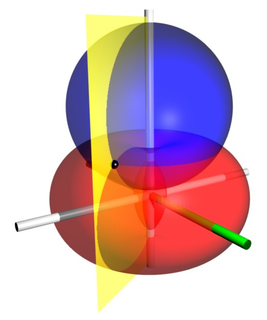An integrating factor is any expression that a differential equation is multiplied by to facilitate integration. For example, the nonlinear second order equation
To integrate, note that both sides of the equation may be expressed as derivatives by going backwards with the chain rule:
Solving first order linear ordinary differential equations
Integrating factors are useful for solving ordinary differential equations that can be expressed in the form

The basic idea is to find some function, say  , called the "integrating factor", which we can multiply through our differential equation in order to bring the left-hand side under a common derivative. For the canonical first-order linear differential equation shown above, the integrating factor is
, called the "integrating factor", which we can multiply through our differential equation in order to bring the left-hand side under a common derivative. For the canonical first-order linear differential equation shown above, the integrating factor is  .
.
Note that it is not necessary to include the arbitrary constant in the integral, or absolute values in case the integral of  involves a logarithm. Firstly, we only need one integrating factor to solve the equation, not all possible ones; secondly, such constants and absolute values will cancel out even if included. For absolute values, this can be seen by writing
involves a logarithm. Firstly, we only need one integrating factor to solve the equation, not all possible ones; secondly, such constants and absolute values will cancel out even if included. For absolute values, this can be seen by writing  , where
, where  refers to the sign function, which will be constant on an interval if
refers to the sign function, which will be constant on an interval if  is continuous. As
is continuous. As  is undefined when
is undefined when  , and a logarithm in the antiderivative only appears when the original function involved a logarithm or a reciprocal (neither of which are defined for 0), such an interval will be the interval of validity of our solution.
, and a logarithm in the antiderivative only appears when the original function involved a logarithm or a reciprocal (neither of which are defined for 0), such an interval will be the interval of validity of our solution.
To derive this, let  be the integrating factor of a first order linear differential equation such that multiplication by
be the integrating factor of a first order linear differential equation such that multiplication by  transforms a partial derivative into a total derivative, then:
transforms a partial derivative into a total derivative, then:



Going from step 2 to step 3 requires that  , which is a separable differential equation, whose solution yields
, which is a separable differential equation, whose solution yields  in terms of
in terms of  :
:




To verify, multiplying by  gives
gives

By applying the product rule in reverse, we see that the left-hand side can be expressed as a single derivative in 

We use this fact to simplify our expression to

Integrating both sides with respect to 


where  is a constant.
is a constant.
Moving the exponential to the right-hand side, the general solution to Ordinary Differential Equation is:

In the case of a homogeneous differential equation,  and the general solution to Ordinary Differential Equation is:
and the general solution to Ordinary Differential Equation is:
 .
.
for example, consider the differential equation

We can see that in this case 



Multiplying both sides by  we obtain
we obtain

The above equation can be rewritten as

By integrating both sides with respect to x we obtain

or

The same result may be achieved using the following approach




Reversing the quotient rule gives

or

or

where  is a constant.
is a constant.
Solving nth order linear differential equations
Integrating factors can be extended to any order, though the form of the equation needed to apply them gets more and more specific as order increases, making them less useful for orders 3 and above. The general idea is to differentiate the function 
 times for an
times for an  th order differential equation and combine like terms. This will yield an equation in the form
th order differential equation and combine like terms. This will yield an equation in the form

If an  th order equation matches the form
th order equation matches the form  that is gotten after differentiating
that is gotten after differentiating  times, one can multiply all terms by the integrating factor and integrate
times, one can multiply all terms by the integrating factor and integrate 
 times, dividing by the integrating factor on both sides to achieve the final result.
times, dividing by the integrating factor on both sides to achieve the final result.
Example
A third order usage of integrating factors gives

thus requiring our equation to be in the form

For example in the differential equation

we have  , so our integrating factor is
, so our integrating factor is  . Rearranging gives
. Rearranging gives

Integrating thrice and dividing by the integrating factor yields
































































































